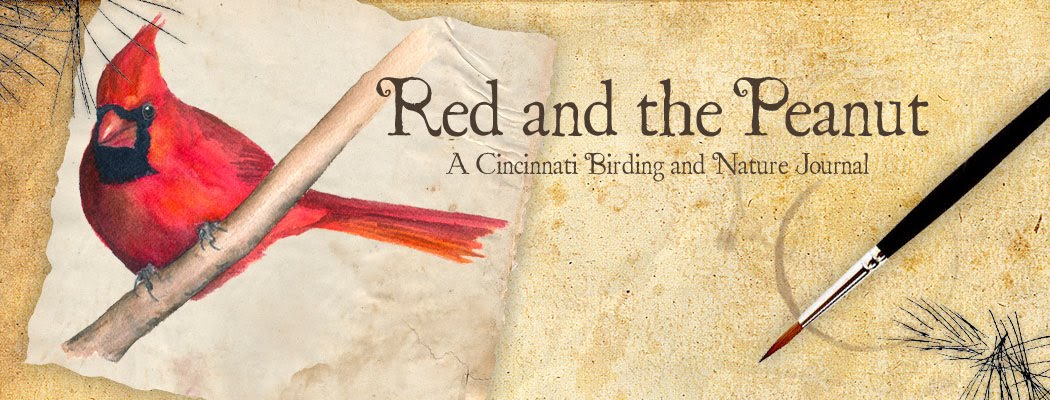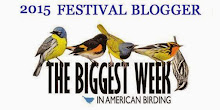The bright red berries of a flowering dogwood (
Cornus florida) tree bring a rush of everything autumn into my heart when I see them. When I was young, dogwood trees could be found everywhere. For me, their airy branches and delicate spring blossoms were the most beautiful of all the flowering trees, and when the hot summer days were swept away by cool and crisp breezes, and red and orange leaves danced in the forest, I couldn't wait for the burst of cheery red berries that would soon follow...
 |
| ...bright red berries of a flowering dogwood (Cornus florida) define fall. |
These berries are all from a dogwood tree I found while hiking around the lake at Greenbo Lake State Park in Kentucky during our annual fall trip. The tree was big, and I was excited when I turned the bend and found it. Around here, dogwood trees have succumbed to Dogwood Anthracnose, a fungal disease that stunts and often kills the tree. I remember back in the 80s when reports predicted dogwood trees might all be wiped out by the turn of the century, and it was all but hopeless. Luckily, some of the trees are surviving. A few seem to have a natural resistance to the fungus, while others seem to have survived because they are growing in a perfect location—sun, good air circulation, good drainage, yet sufficient water are all important. Since this tree was so big, there's no doubt location, location, location was in play because it didn't seem to have been affected by the fungus and its fruit production was substantial...
 |
| ...autumn leaves and red berries of the flowering dogwood add a splash of color to the fall woods. |
The anthracnose fungus likes cool and moist conditions, and trees deep in shade are often more susceptible to infection. This tree was hugging the lake, but it was on a small promontory with nice sun exposure and plenty of air circulation. Because it's an understory tree, it was in partial shade, but the front faced the lake, which gave it access to extra sunlight. (
Click here for a page on wet weather leaf diseases from the ODNR, which includes information on Dogwood Anthracnose.)
 |
| ...red berries of Cornus florida on a healthy tree in Greenbo Lake State Park in Kentucky. |
Dogwood anthracnose (
Discula destructiva) affects flowering dogwoods (
Cornus florida) in the east, south, and parts of the midwest...and Pacific dogwoods (
Cornus nuttallii) in the Pacific northwest.
Click here for information on how to identify and control Dogwood Anthracnose. The most common symptom of infection is "spotting and blighting of the foliage," which shows as
a tan spot on the leaf ringed in purple (
click here for Cornell University's explanation).
 |
| In the 80s we were warned flowering dogwoods could someday disappear from our forests, so it's always wonderful to stumble across a large, healthy fruiting tree in the woods! |
The disease was first identified in 1978 and through the 80s its spread was swift and thorough through the east, south and parts of the midwest, as well as parts of the Pacific northwest, but some trees exhibited a natural resistance to the fungus. In 1991 79% of the flowering dogwood trees in Catoctin Mountain park in Maryland were dead from the fungus, but a few escaped infection and were found to be resistant to the disease. Those trees became part of a study by the University of Tennessee Dogwood Research Team. The research team was able to produce an anthracnose-resistant tree called "Appalachian Spring" from clones of the Catoctin trees. In 2001 they planted many of the disease-resistant clones in the forest to help replace those lost to the disease (for more on this story,
click here and
here). The University of Tennessee Dogwood Research Team, chaired by
Dr. Mark Windham, a professor at the University of Tennessee, is still working to improve and protect dogwoods from all diseases (
click here for a recent article on what they are doing now).
 |
| These bright red berries stand out like fruit flags to migrating birds. The berries are nutritious and full of fat and can help fuel their long flights south. |
Nutritional quality among berries differs. Dogwood berries are high in fat and calories. They ripen in late summer and early fall and are a favorite among migrating birds such as thrushes and catbirds, according to Geoffrey A. Hammerson in
"Connecticut Wildlife: Biodiversity, Natural History, and Conservation" (
page 366). Hammerson also mentions not all birds can handle high-fat diets; e.g., American Robins absorb digested fats poorly, so the bright red dogwood berries are probably not their first choice in berries, which is good because it leaves more of the berries for the migratory species traveling long distances that need them. If Dogwood trees and their berries disappear from the forests, they will leave a hole in many migrating birds' diets.
 |
| It sounds like these beautiful trees now have a fighting chance. Let's hope they survive, not only so we can continue to enjoy their beautiful spring blossoms and brightly colored autumn berries, but more importantly, so migrating birds have a ready source of high-fat fruit to fuel their journey south in the fall. |















